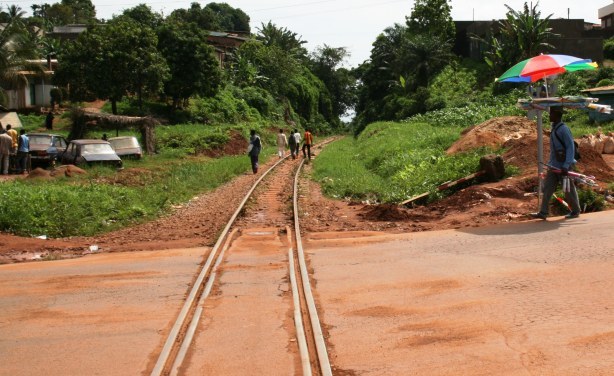Mariam Kandege, 24, a worker at a fruit canning factory in the sprawling city of Dar es Salaam, wakes at 5 a.m. and hurries from her rented room in the Kimara suburb to a bus terminal, joining the scramble to get a seat on a daladala, a privately owned minibus, which quickly joins the bumper to bumper traffic jam into town.
After changing buses several times, she finally reaches the factory in the Nyerere Road industrial area, 30 kms (20 miles) away, at 8 a.m., a journey that leaves her tired and sweating.
"I don't have any option," she says. "If I didn't wake up at five, I would find the factory doors closed and that would deny me income for the day."
Kandege is one of tens of thousands of residents of the port city who hope government plans for a new public transport system will ease a struggle to get to work that takes hours and costs a sizeable chunk of their modest pay. Kandege, for instance, earns 6,500 Tanzania shillings ($4.06) a day and spends 1,200 shillings of that on transport.
Governments in East Africa increasingly are investing in efficient, low-carbon public transport systems as the best way to relieve the plight of millions of city dwellers and address climate change by cutting the massive carbon emissions from private vehicles in clogged city streets.
The first commuter train services were launched in Dar es Salaam last month and in the Kenyan capital Nairobi last month, the first results of the two nations' multi-million-dollar plans for public transport networks that include commuter trains and high-speed buses.
Tanzanian Transport Minister Harrison Mwakyembe said the main aim of commuter trains was to ease traffic congestion during peak hours. Economists said a better regional transport network also would speed the movement of people and goods across the region, bringing major economic benefits.
The first commuter trains to run in Dar, one of Africa's fastest-growing cities with a population of about 2.8 million, were a milestone for millions of ordinary Tanzanians, from a barber in the Tandale kwa tumbo slum to a teacher in Sinza.
'I LOVE THE TRAIN RIDE'
Passengers told AlertNet the 400 shilling (25 cent) train fare was considerably cheaper than current bus fares of up to 1,000 shillings for a one-way trip. "I love the train ride, it is fast, it doesn't waste time and everybody is getting in and out in an organized way," said Dar resident Mwantumu Hamisi.
Nairobi residents were equally enthusiastic about the new commuter trains running between the city centre and the suburb of Syokimau, saying they were much faster than existing dilapidated trains.
One Nairobi resident, Devotha Joroge, told AlertNet the 16 km (10 mile) ride from Syokimau to central Nairobi takes only 15 minutes while the same journey by car takes more than an hour.
In Tanzania, the new train is separate from a Rapid Transit Project (DART) financed jointly by the government and the World Bank, but is in line with the country's development plans, experts said. The first phase of DART is due to be completed in 2014 and 400 billion shillings ($25 million) have so far been invested in it.
Critics say the East African transport sector has been held back by governments' lack of clear policies and political will to implement important projects.
"The problem with politicians is that they don't mean what they say, their policies are never straightforward…and a possible change in government may affect envisaged projects no matter how ambitious," says David Mwaibula, a former executive of Dar es Salaam city transport.
The East African Community (EAC) linking Kenya, Tanzania, Uganda, Rwanda and Burundi, with a combined population of over 140 million and GDP of over $74 billion, has largely failed to tap the potential of its common market because of poor public transport infrastructures, experts say.
The Surface and Marine Transport Regulatory Authority (SUMATRA) estimates that Tanzania is losing output worth about 4 billion shillings ($2.5 million) a day because people cannot get to work on time due to traffic congestion.
'A RENEWED SENSE OF URGENCY'
But Haji Semboja,a researcher at the University of Dar es Salaam Economic Research Bureau, thinks things are changing for the better. "There is a renewed sense of urgency among the political leadership and private sector to fix the infrastructure problem," he said.
Until now, "the lack of a transport master plan for cities like Nairobi and Dar es Salaam is the main source of traffic congestion which increases operating costs," he said. One problem is that poor design and planning of road networks and infrastructure make it difficult to adapt as cities expand, he said.
Transport in developing countries is the one of the largest, and fastest growing, sources of greenhouse gas emissions. According to the United Nations, transport-related carbon dioxide emissions are expected to increase 57 percent worldwide in the period 2005 to 2030.
Environmental experts believe that an efficient public transport network in East Africa is crucial to attaining sustainable development and creating a low carbon society.
"If we can limit the number of motor vehicles on the move by encouraging efficient low-carbon public transport, we will curb air pollution which contributes to climate change." says Rubera Matoe, an environmental engineer at Ardhi University.
A recent World Bank report 'Turning the Right Corner' says developing countries need to move to a low-carbon transport sector to avoid locking themselves into a costly future.
If countries do not contain fossil fuel use, transport will become the biggest emitter of greenhouse gas by the middle of the 21st century and rising oil prices and carbon pricing agreements will push up the cost of transport, it said.
Kizito Makoye is a journalist based in Dar es Salaam, Tanzania
via AlertNet


